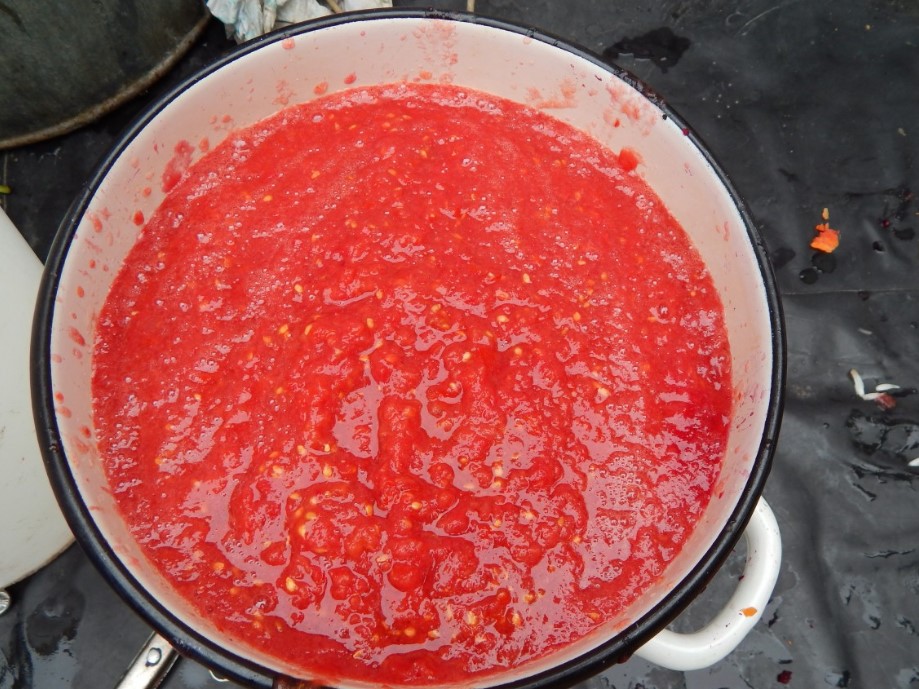
Italian cuisine is a world of diverse flavors, and two sauces that often grace our plates are Primavera and Marinara. Each brings its own unique qualities to the table, creating distinct culinary experiences. Let’s delve into the key differences that set Primavera sauce and Marinara sauce apart.
Brief Overview
Italian sauces are celebrated for their rich heritage and diverse flavors. In the realm of pasta and culinary delights, Primavera sauce and Marinara sauce stand out. Understanding the nuances between these two can elevate your dining experience.
Importance of Understanding Differences
As a culinary enthusiast, grasping the distinctions between Primavera and Marinara opens up a world of gastronomic possibilities. From flavor profiles to regional preferences, let’s explore these sauces in detail.
Origin and Ingredients
Primavera Sauce: Freshness and Variety
1. Origin and History
Primavera, translating to “spring” in Italian, captures the essence of this sauce. Originating in the heart of Italy, it reflects the abundance of fresh spring vegetables.
2. Key Ingredients
Primavera sauce boasts a colorful array of vegetables, including bell peppers, cherry tomatoes, and zucchini. Olive oil, garlic, and herbs like basil and thyme contribute to its aromatic profile.
Marinara Sauce: Simplicity and Tradition
Origin and Historical Context
Marinara, with its roots in Naples, is a sauce deeply embedded in Italian tradition. The simplicity of its origin speaks volumes about its timeless appeal.
Core Ingredients
Tomatoes take the spotlight in Marinara sauce, supported by garlic, onions, and basil. This straightforward combination forms the backbone of many Italian dishes.
Flavor Profiles
Primavera Sauce: Bursting with Freshness
1. Variety of Vegetables
The medley of vegetables in Primavera sauce creates a burst of freshness in every bite. The combination of flavors is vibrant and dynamic.
2. Seasonings and Herbs
Herbs like basil and thyme, along with a hint of garlic, contribute to Primavera’s aromatic and herbaceous flavor profile.
Marinara Sauce: Rich and Robust Simplicity
1. Tomato-Focused Flavor
Marinara, with its focus on tomatoes, offers a rich and robust flavor. The simplicity allows the tomatoes to shine, creating a savory experience.
2. Common Herbs and Spices
The use of garlic and basil enhances the savory notes, adding depth to Marinara’s overall taste.
Texture and Consistency
Primavera Sauce: Light and Vibrant
1. Chunks of Vegetables
The texture of Primavera sauce is characterized by the presence of hearty chunks of vegetables, providing a satisfying crunch.
2. Saucing Techniques
Light saucing techniques maintain the vibrancy of the vegetables, ensuring a refreshing consistency.
Marinara Sauce: Thick and Hearty
1. Smooth Tomato Consistency
Marinara’s texture leans towards the thicker side, with a smooth and hearty consistency that coats pasta and other dishes evenly.
2. Cooking Methods
Slow cooking methods contribute to Marinara’s thick texture, allowing the flavors to meld and intensify.
Culinary Uses
Primavera Sauce: Versatility in Dishes
1. Pasta Pairings
Primavera sauce complements various pasta shapes, creating a colorful and flavorful pasta dish.
2. Vegetable-Based Recipes
Its versatility extends beyond pasta, elevating vegetable-based recipes with its freshness and vibrancy.
Marinara Sauce: Classic Applications
1. Traditional Pasta Dishes
Marinara is the classic choice for traditional pasta dishes, embodying the essence of Italian comfort food.
2. Pizza and Beyond
Beyond pasta, Marinara is a popular pizza sauce, contributing to the beloved flavors of this Italian staple.
Popularity and Regional Preferences
Primavera Sauce: Modern Trends and Global Appeal
1. Fusion Cuisines
Primavera sauce has found its place in modern fusion cuisines, adapting to global tastes and preferences.
2. Cultural Adaptations
Its flexibility allows for cultural adaptations, making it a favorite in diverse culinary landscapes.
Marinara Sauce: Timeless Favorite with Regional Twists
1. Regional Variations
While Marinara remains a timeless favorite, regional variations add unique twists to its preparation across Italy.
2. Cultural Significance
Marinara’s cultural significance is evident in its enduring popularity and diverse regional interpretations.
Health and Nutritional Aspects
Primavera Sauce: Nutrient-Rich and Colorful
1. Vegetable Benefits
The abundance of vegetables in Primavera sauce contributes to its nutrient-rich profile, offering a spectrum of vitamins and minerals.
2. Health-Conscious Appeal
Primavera’s emphasis on fresh, wholesome ingredients aligns with health-conscious preferences.
Marinara Sauce: Classic Comfort with Nutritional Value
1. Tomatoes and Antioxidants
Tomatoes, a key component of Marinara, bring antioxidants to the table, enhancing its nutritional value.
2. Balanced Nutrition
Marinara strikes a balance between classic comfort and nutritional value, making it a wholesome choice.
DIY Tips for Making Each Sauce
Primavera Sauce: Freshness in Every Step
1. Selecting the Right Vegetables
Choosing a variety of fresh, seasonal vegetables is crucial for an authentic Primavera experience.
2. Saucing Techniques
Light saucing techniques preserve the individual flavors of the vegetables, ensuring a fresh and vibrant outcome.
Marinara Sauce: Simplicity in Preparation
1. Tomato Selection and Preparation
Opting for ripe, quality tomatoes forms the foundation of a delicious Marinara. Proper preparation enhances the sauce’s overall richness.
2. Key Cooking Tips
Slow cooking on low heat allows Marinara to develop its signature thick consistency and deep flavors.
Pairing Suggestions
Primavera Sauce: Enhancing the Dining Experience
1. Wine and Beverage Pairings
Primavera’s vibrant flavors pair well with light white wines, enhancing the overall dining experience. Fresh juices and sparkling water are also excellent choices.
2. Complementary Sides
Pairing with salads or lightly seasoned grilled proteins complements Primavera’s vegetable-centric nature.
Marinara Sauce: Time-Tested Combinations
1. Classic Beverage Pairings
Marinara’s robust flavors pair seamlessly with red wines, creating a classic Italian dining experience. Herbal teas also offer a delightful contrast.
2. Perfect Accompaniments
Traditional breadsticks or garlic bread make for ideal companions, allowing you to savor Marinara’s hearty texture.
Conclusion
In summary, Primavera sauce and Marinara sauce each bring a unique set of qualities to the table. From flavor profiles to culinary uses, understanding these differences enriches our appreciation for Italian cuisine.
While each sauce has its distinct characteristics, exploring both Primavera and Marinara allows for a diverse and delightful culinary journey. Embrace the variety and savor the nuances of these Italian classics.
FAQs (Frequently Asked Questions)
- Q: Can I use Primavera sauce on pizza? A: Primavera sauce is versatile and can be used on pizza for a fresh and vibrant twist. Experiment with different vegetable toppings for a unique flavor experience.
- Q: Is Marinara sauce always made with fresh tomatoes? A: While fresh tomatoes are common, Marinara can be made with canned tomatoes as well. The key lies in selecting high-quality tomatoes for the best flavor.
- Q: Are there regional variations of Primavera sauce? A: Primavera sauce has adapted to various culinary landscapes, leading to regional variations that incorporate local ingredients and preferences.
- Q: Can I freeze both Primavera and Marinara sauces for later use? A: Yes, both sauces can be frozen for later use. Ensure proper storage in airtight containers to maintain freshness.
- Q: Are there vegetarian options for Marinara sauce? A: Marinara sauce is inherently vegetarian, as it primarily consists of tomatoes, garlic, onions, and herbs. It’s a flavorful option for vegetarian dishes.










